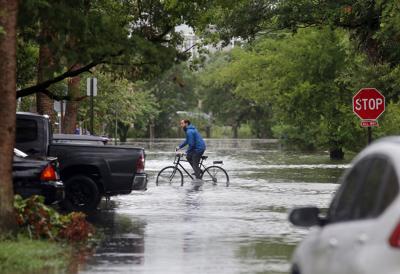Lesson from the Netherlands: Charleston should embrace its water

A forthcoming $3 million study from the Army Corps of Engineers ought to provide the most detailed picture yet of the flooding challenges and risks facing the Charleston peninsula.
An updated flood risk map from the Federal Emergency Management Agency will hopefully help homeowners accurately assess their vulnerability, although the data are in many ways out of date and insufficient already.
But if seas keep rising and storms keep getting stronger, Charleston will face an increasingly difficult challenge in keeping water out of its lowest-lying areas.
That’s why city officials’ recent expedition to the Netherlands is so important. If we can’t keep the water out completely, we can learn to coexist with it, as Europe’s own Lowcountry has done for centuries.
Of course, the Dutch have also invested in billions of dollars’ worth of high-tech flooding solutions. Charleston has identified at least $2 billion in similar fixes here. We’ll need to implement those measures.
ut sometimes pumps and pipes aren’t the best way to deal with floodwater. In the Netherlands, flood-prevention mechanisms often double as community amenities. That’s a relatively unheard of strategy here in the United States, but it’s certainly one worth considering.
Concrete amphitheaters double as massive retention ponds in heavy rain, for example. Rain gardens are both beautiful and effective at soaking up stormwater.
Charleston Mayor John Tecklenburg, who led the trip to the Netherlands, even envisioned “a series of Colonial Lakes” in West Ashley.
That’s a lot more glamorous than a pumping station or a new ditch. But it also might well be more expensive, or at least cost about the same amount.
And that’s Charleston’s biggest problem. The city budget is mostly eaten up covering basic services like fire and police protection. A lot of Charleston County’s money, for better or for worse, tends to go toward road projects.
South Carolina’s budget is usually tight as well, and Charleston has to compete with other parts of the state for what money we can get.
Certainly, city, county and state officials will have to get a little more creative — and they could use a lot more flexibility from the Legislature — to raise some flood prevention funding. But $2 billion is a lot to come up with in a short period of time, and struggling homeowners can’t wait decades.
That’s why the Army Corps study is so important. A similar study was a precursor to implementing a whopping $20 billion worth of flood-prevention measures in New Orleans using mostly federal funding, for example.
Charleston needs all hands on deck, from City Council to Congress, to remain a livable city as the waters rise. And as the Dutch have learned from centuries of experience, sometimes the most effective way to do that might be to embrace the water rather than fighting it.
